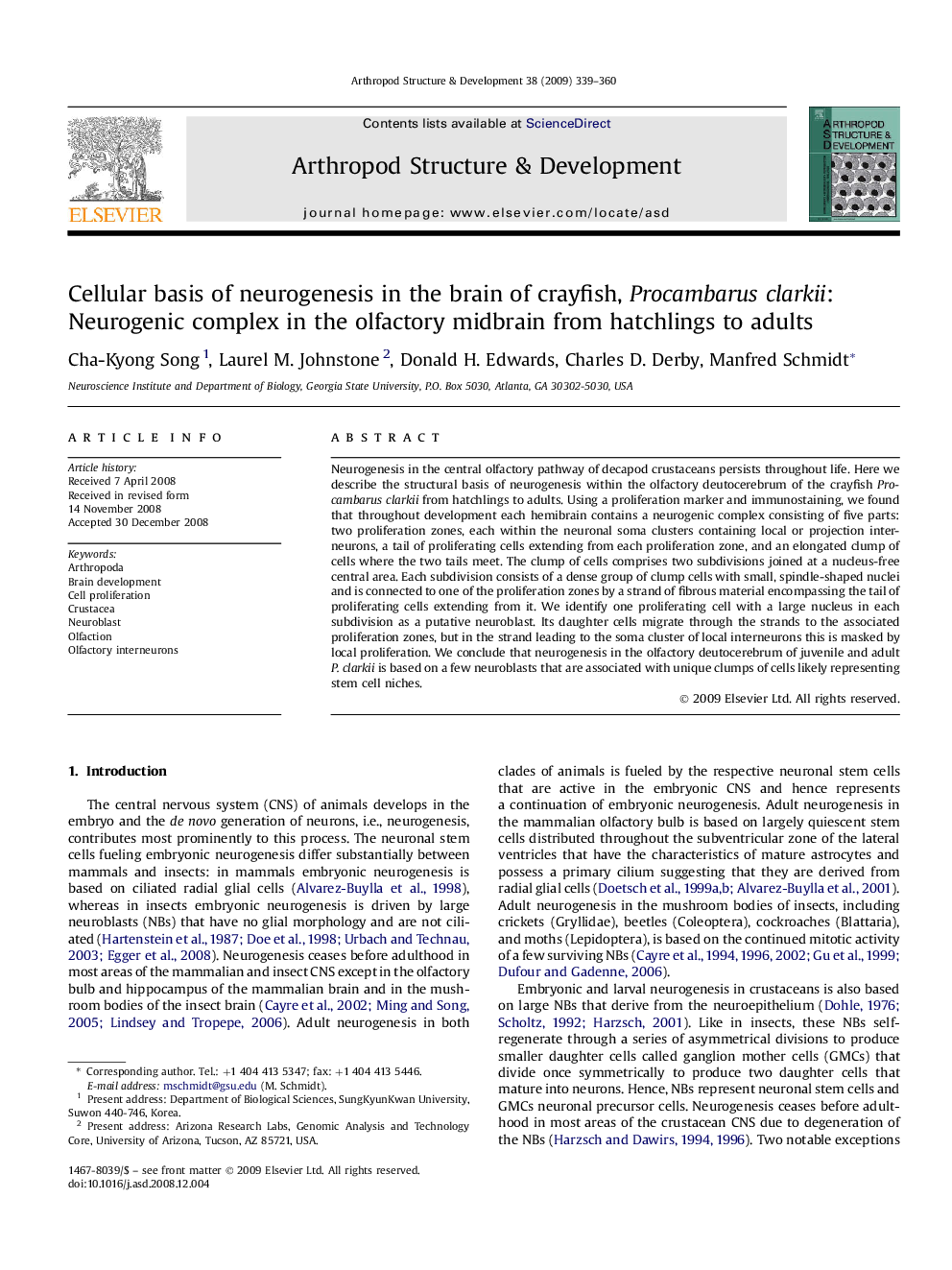| Article ID | Journal | Published Year | Pages | File Type |
|---|---|---|---|---|
| 2779052 | Arthropod Structure & Development | 2009 | 22 Pages |
Neurogenesis in the central olfactory pathway of decapod crustaceans persists throughout life. Here we describe the structural basis of neurogenesis within the olfactory deutocerebrum of the crayfish Procambarus clarkii from hatchlings to adults. Using a proliferation marker and immunostaining, we found that throughout development each hemibrain contains a neurogenic complex consisting of five parts: two proliferation zones, each within the neuronal soma clusters containing local or projection interneurons, a tail of proliferating cells extending from each proliferation zone, and an elongated clump of cells where the two tails meet. The clump of cells comprises two subdivisions joined at a nucleus-free central area. Each subdivision consists of a dense group of clump cells with small, spindle-shaped nuclei and is connected to one of the proliferation zones by a strand of fibrous material encompassing the tail of proliferating cells extending from it. We identify one proliferating cell with a large nucleus in each subdivision as a putative neuroblast. Its daughter cells migrate through the strands to the associated proliferation zones, but in the strand leading to the soma cluster of local interneurons this is masked by local proliferation. We conclude that neurogenesis in the olfactory deutocerebrum of juvenile and adult P. clarkii is based on a few neuroblasts that are associated with unique clumps of cells likely representing stem cell niches.
